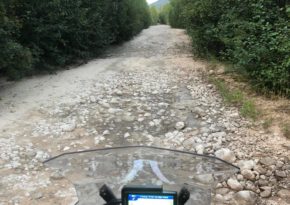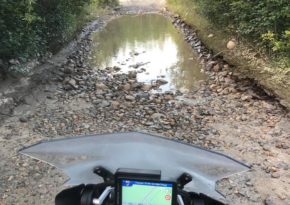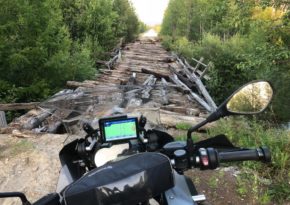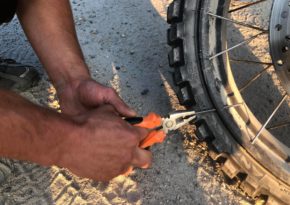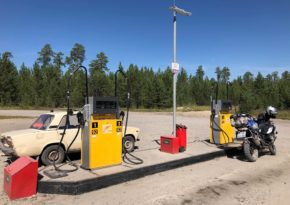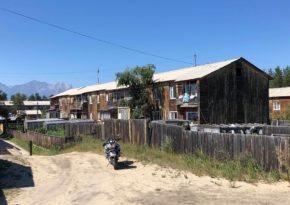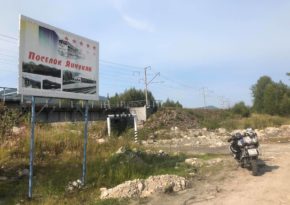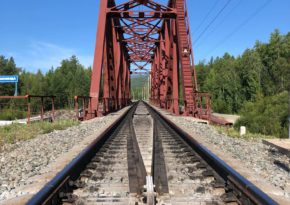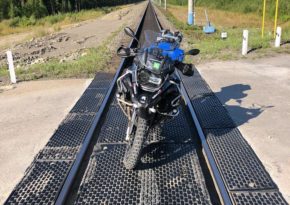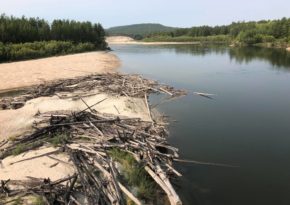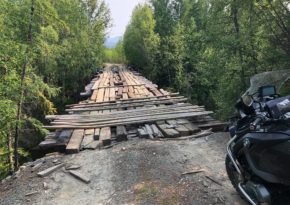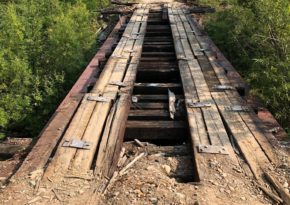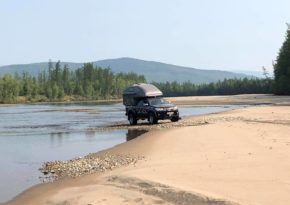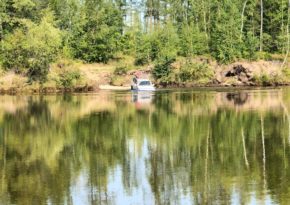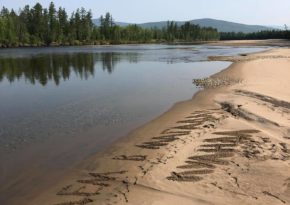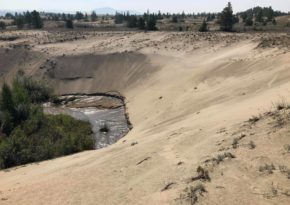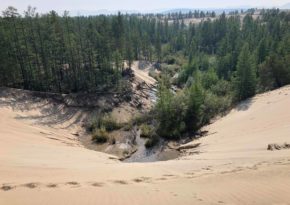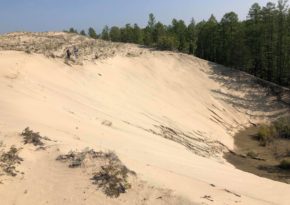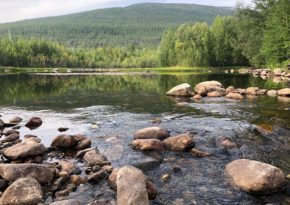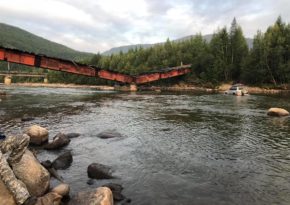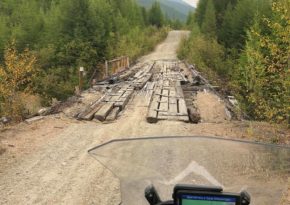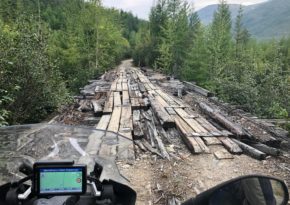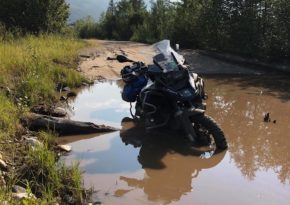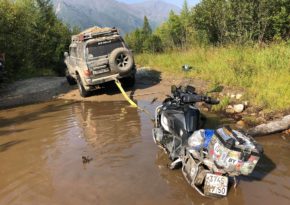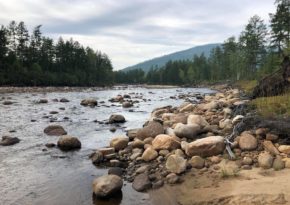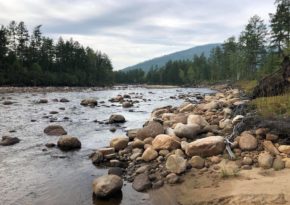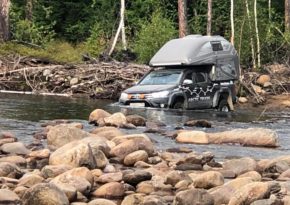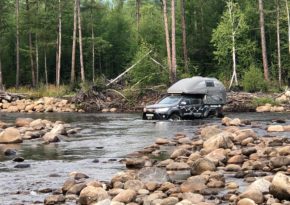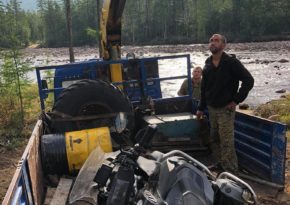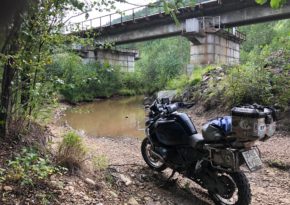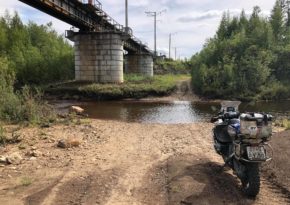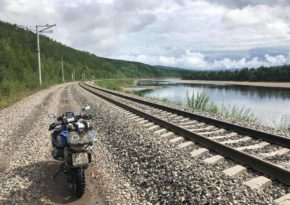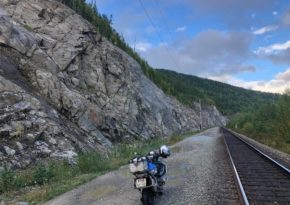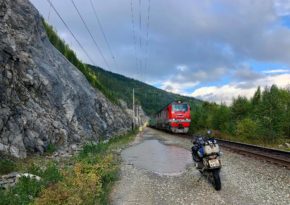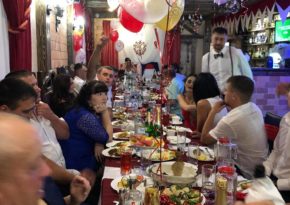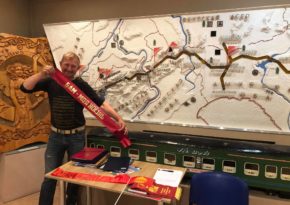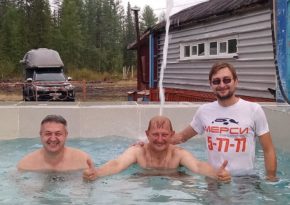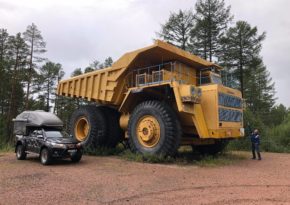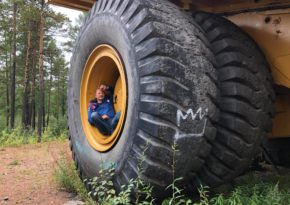Heading for Magadan: BAM
The Baikal-Amur Mainline.
After we passed by a small village on the bank of the Upper Angara called Novy Uoyan, the road turned into something completely unacceptable.
At first, forty kilometers of the road were along solid sand, like in the desert (that isn't the best track for riding a motorbike), then I came across stones, pits, destroyed bridges and fords. I had much fun on this 240 km long road. The front wheel of my motorbike acquired a square shape. Just because of a miracle I did not have a breakdown and kept on my way. I am going through solid forests of taiga and billions of midges.
Severomuisk, which used to be a developed town, now is in a deplorable state, like all the other villages on BAM. It happens because young people are leaving their hometowns. Moreover, there is unemployment and two streets burned down completely after the fire. That was sad to see.
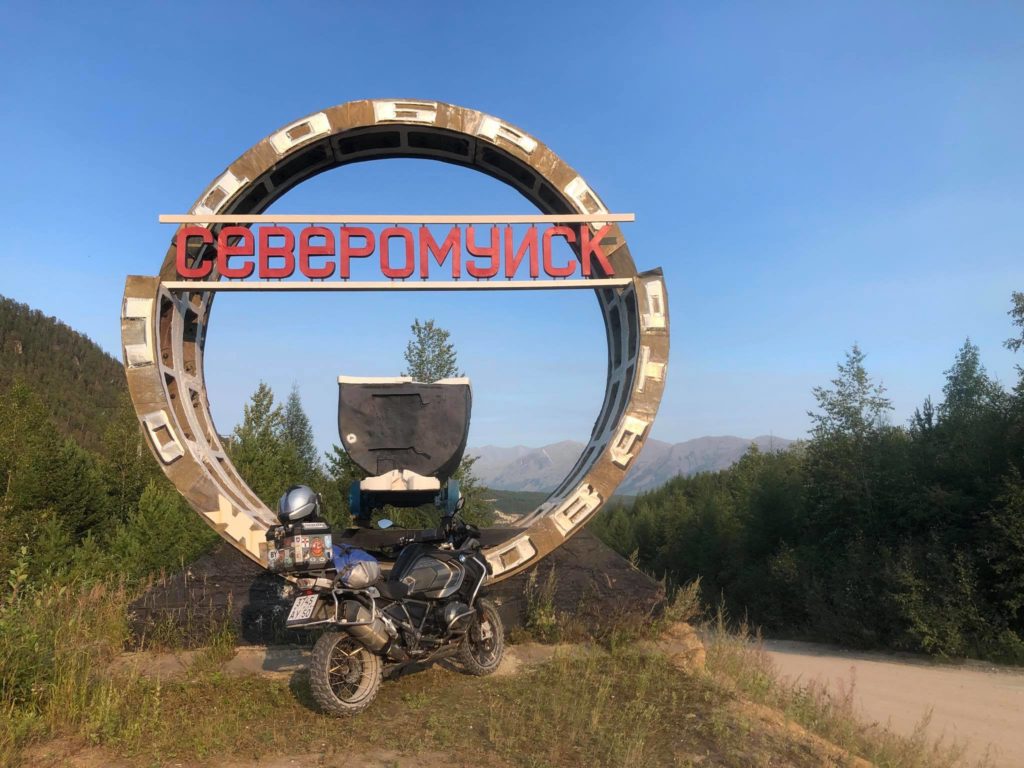
When it got dark, there were still 60 km left to the nearest village named Toksimo. Two hours of riding at night along such a type of road seemed to be risky, so we decided to stay overnight right in the taiga on the lake shore. That day I rode 395 km standing and using gear number 2 or 3. In the evening my legs were buzzing!
Tomorrow we'll have a lot of fun too. After Toximo village we are going to cross the Vitim river over the famous dilapidated bridge.
I pray the equipment will withstand this challenge!
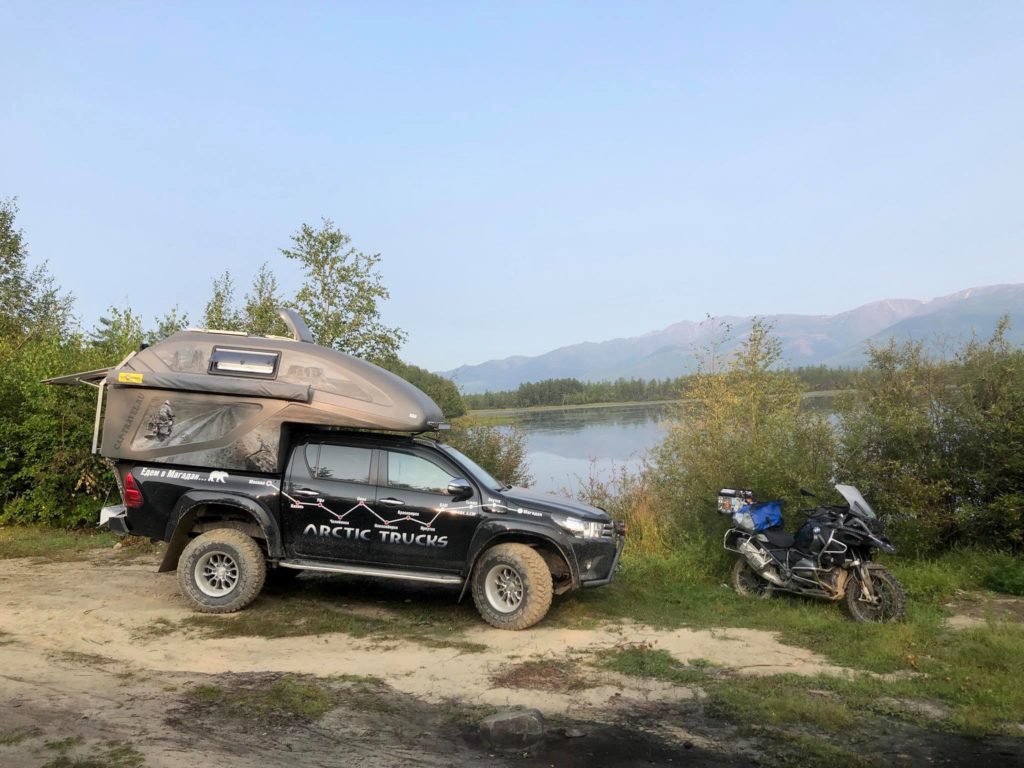
Toksimo is an administrative centre and a pretty developed town (according to BAM's standards, of course). We made a stop to have a snack in a café. What's more, I bought a Megafon SIM card, because the MTS one hadn't worked very well. In general, there's a permanent problem with communication links on BAM. Well, indeed, who needs it in the taiga?
We reached the bridge at about 4 p.m. The last 20 kilometers to it also did not let us get bored. There were deep rocky fords, huge puddles up to 0.5 m deep and rotten bridges. You would have even more "fun" if you make this way alone.
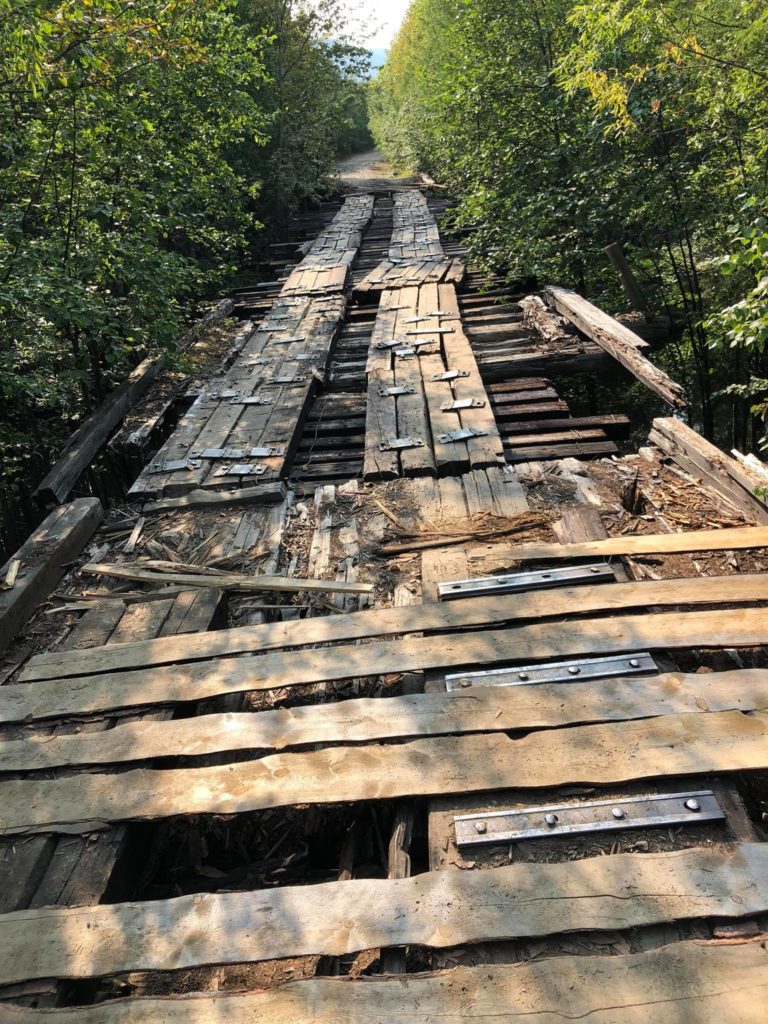
For you to understand, the bridge over the Vitim river is a kind of a local attraction for crazy lovers of extreme travelling. This old burnt railway bridge consists of metal structures, which were laid on supports, and sleepers/boards thrown over them. Some are fixed with wire, some have simply rotted and between them there have formed holes up to 1 metre wide. The bridge is 4 m wide and there are no fences. Its length is about 600 m, its height above the water is probably about 12…15 m. Vitim is a very deep, full-flowing river with a strong stream.
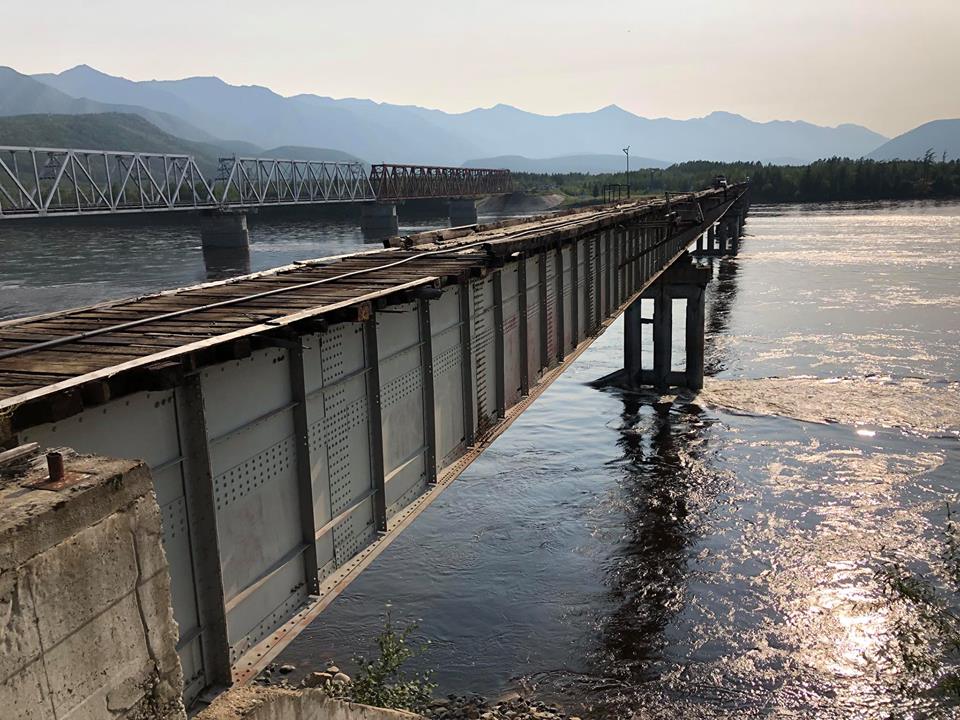
If you have a fear of heights, then even a walk along this structure will be a shock for you. There are a lot of videos on YouTube about how people drove across the bridge in different cars. Some spent several hours on it, because they had to move by small intervals. The fact that added more adrenaline was the demolishing of one of the load-bearing supports by the stream in previous May (two huge spans of the bridge remained hanging, attached together with bolts). A survey of residents of the nearest village 60 kilometers from the bridge did not find clear results. Some said that one of their friends had recently passed it by Kamaz, others shook their heads and looked at us as if we were idiots.
We decided to drive over the bridge.
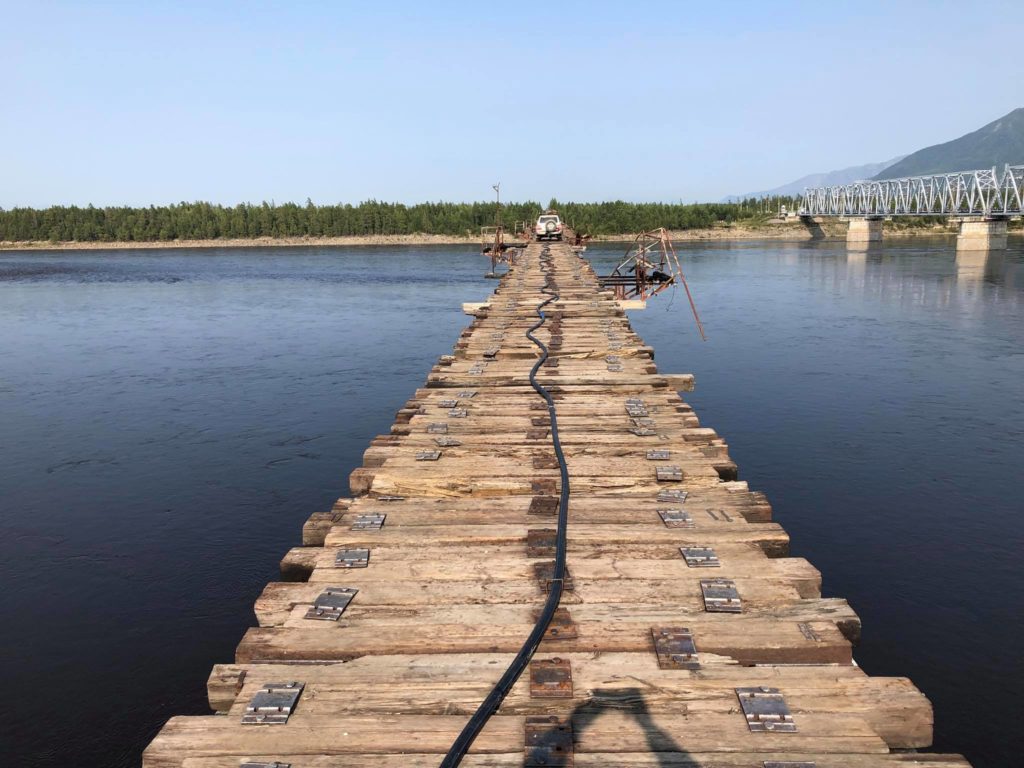
Our first Toyota went this way in 45 minutes. We moved slowly, one person walked in front of the car and guided the driver, laying a metal sand-track in difficult sections. Then it was my turn to go by motorbike. But before that, we had to cover the biggest holes in the centre of the bridge with something. The repair took us a couple of hours. We used old sleepers and sawn logs of pine trees.
I understood that I had to overcome the entire bridge without stopping, therefore, I had walked along it back and forth several times before the ride, memorizing the route.
"Here I'll go on the right side, then there is a rotten sleeper, then I should go along the board, then I'll jump over this hole…", I was analyzing. Any mistake here is fatal.
And I managed to do it! It took me 1.5 min to cross over the bridge. Our second Toyota spent 25 minutes on it.
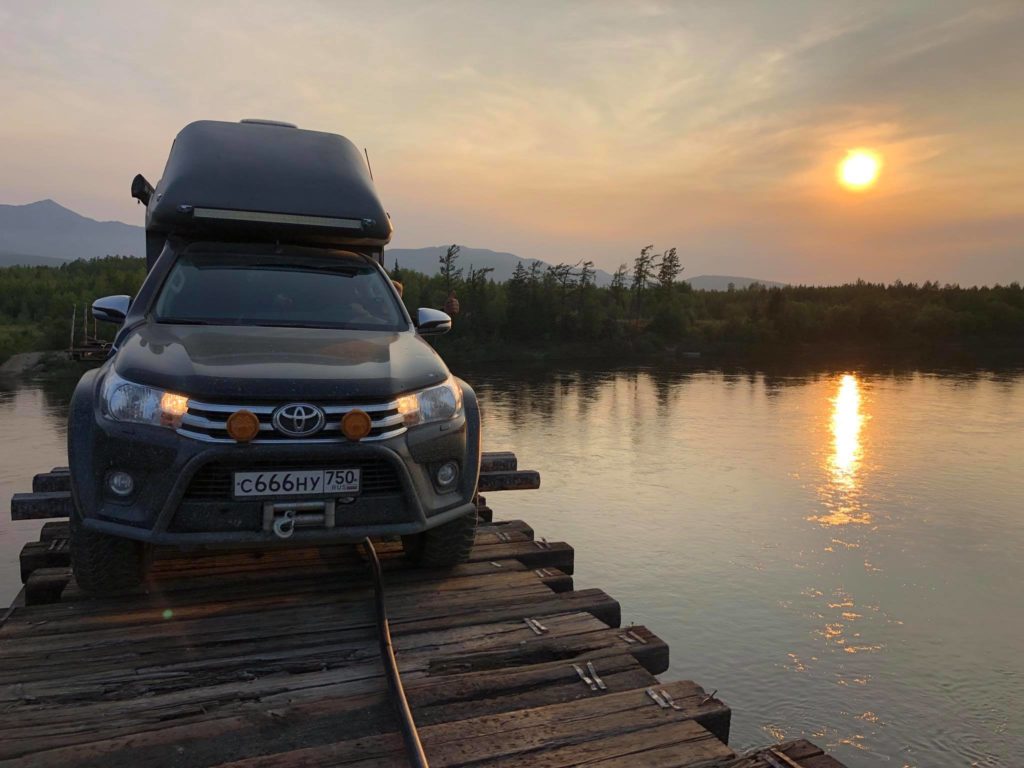
That day we decided not to go anywhere else, but to celebrate our "storming of the Vitim Bridge" right there. We set a table on the sleepers and opened a bottle of fine Ardbeg single malt scotch for this special occasion. Moreover, its flavor was so good!
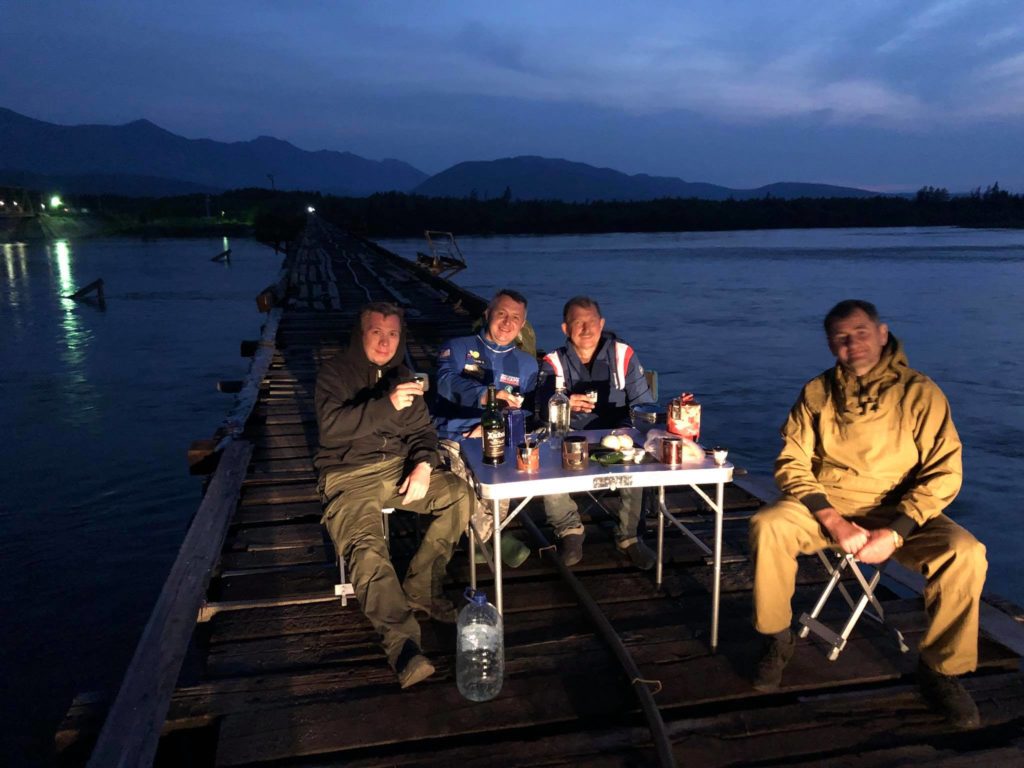
Kuanda.
The next problematic obstacle on our way along BAM was the Kuanda river. There is no bridge, only a railway. The river is wide and there is a ford traversed by jeeps but only in dry weather. The rest of the time there are less options. We were lucky as there had been no rain for a long time. The guys by cars went fording, the water was up the headlights.
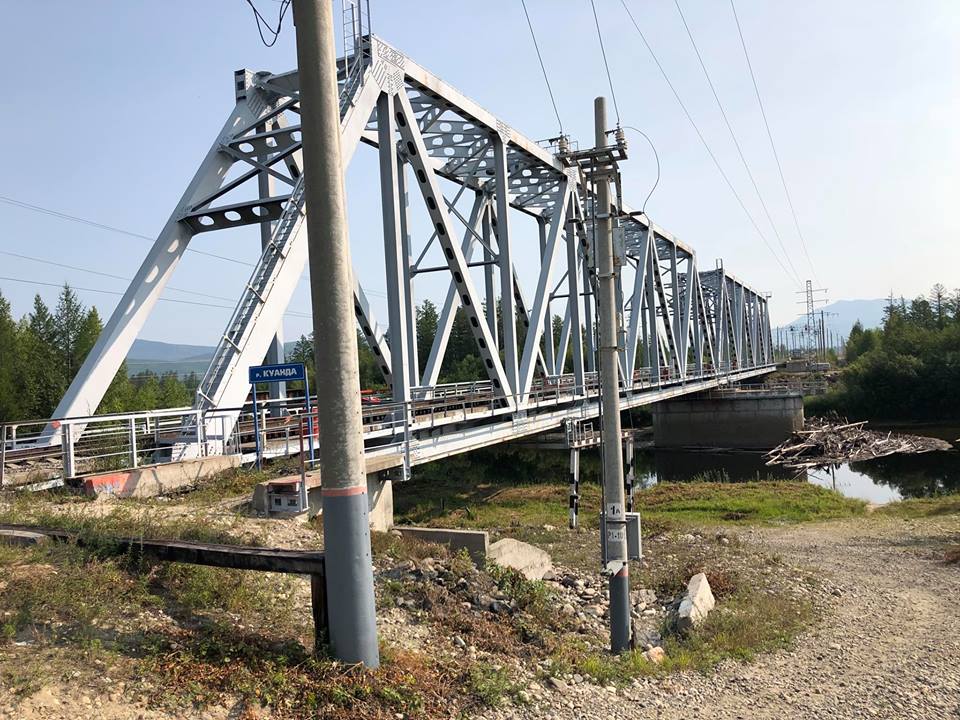
But there was no way for a motorbike. I had to negotiate with the guards of the railway bridge and rode quietly. There was very little space, I barely squeezed between the sleepers and supports.
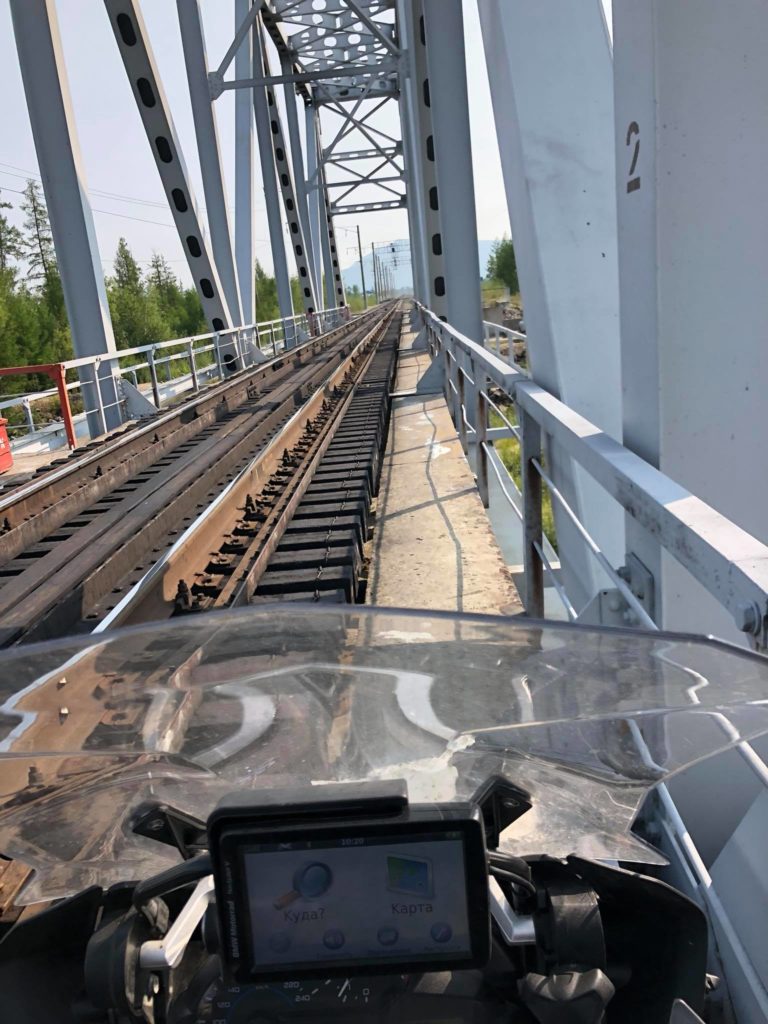
In the evening we arrived in Novaya Chara, which is an urban-type settlement and a railway station nearby. There were three hotels, but all the rooms were taken. We spent the night in the cars.
This is a report from the bridge over the Vitim river. I'm sorry for the poor sound recording quality. It was too windy.
Charsky sands.
A few kilometres from the village Chara there is a unique place called the Charsky sands. It is not easy to get to it because of the taiga and swamps around, but you can negotiate with a local ATV driver and he would bring you to a real desert for 2000 roubles.
Huge dunes of yellow sand rise above the taiga. It's a mystery of nature, how they turned out to be there. And in the middle of the desert there is a beautiful lake with cool water.
From New Chara the road goes up all the time, leading you into the mountains. The views are very beautiful: you can see mountain rivers, lakes and large boulders. One of them was painted as a skull by some jokers. The road is okay, gravel one with a rough surface. But you can go with an average speed of 60 km /h. This is already great!
Twenty kilometers before the railway station of Hani, everything turned habitual: destroyed bridges, fords and a road of pits and stones. We drove into the village streets. In the central square we saw a railway station, two grey residential buildings and two trailer shops, which provide everything that an ordinary person needs in everyday life: vodka, beer, cigarettes, soap, soda, sausage and other unpretentious assortment of products and essentials.
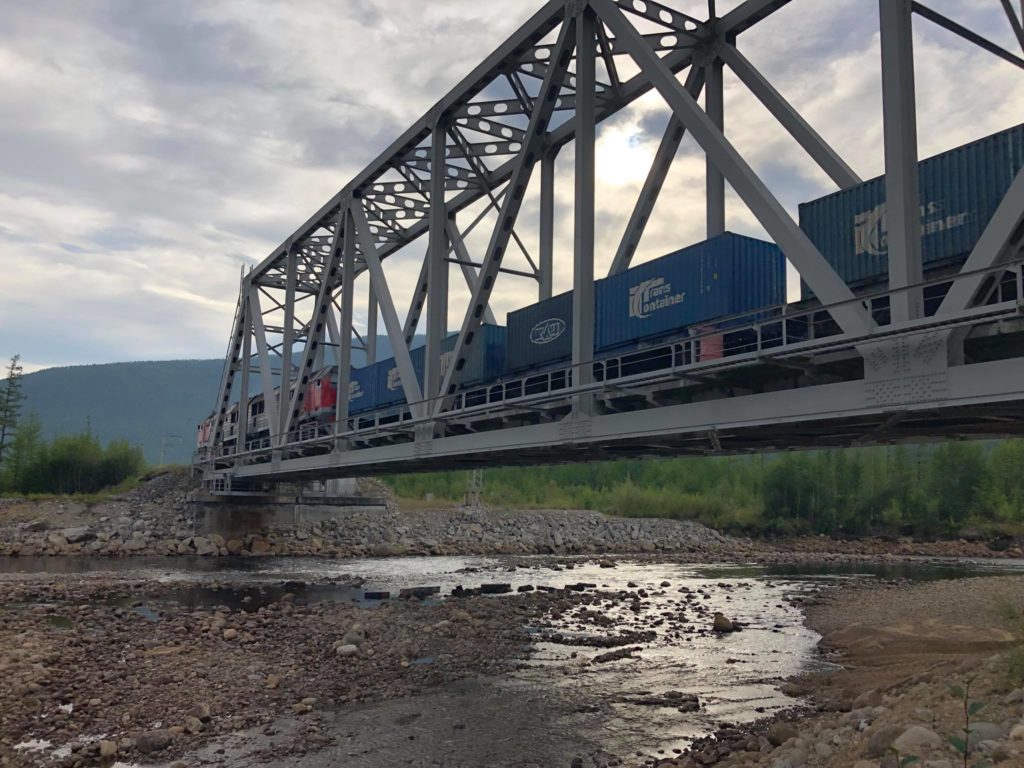
Two kilometers before Hani, the road abuts the river of the same name. It isn't that deep (just a little more than 0.5 m), but this is an obstacle for a motorbike because the stream is strong and the bottom of the river is all littered with large boulders. That's why I had to go to the other side over the railway bridge again.
We stayed overnight on the bank of a beautiful river.
Hani → Olekma.
We woke up in the morning on the bank of the wide Us-Kuel river. Huge boulders and rocks were scattered all over the riverbed.
The river is about 100 metres wide, 1 m deep and the stream is strong. I understood that I couldn't cross the railway bridge as well as I couldn't ride onto a high steep embankment of rubble. I walked along the shore with no idea what to do next.
Under the railway bridge I saw people and two Kamaz trucks (one was with a manipulator). That was exactly what I needed!
— Hello guys!
— Hi!
— Could you help me to transfer the motorbike to the other side?
— Of course! No problem! Where is your motorbike?
Half an hour later I was already saying goodbye to these kind guys, having crossed the river.
These were shift workers from Blagoveshchensk, who were changing electric supports on the tracks. They refused to take any money offered. That day was one of the most difficult for me.
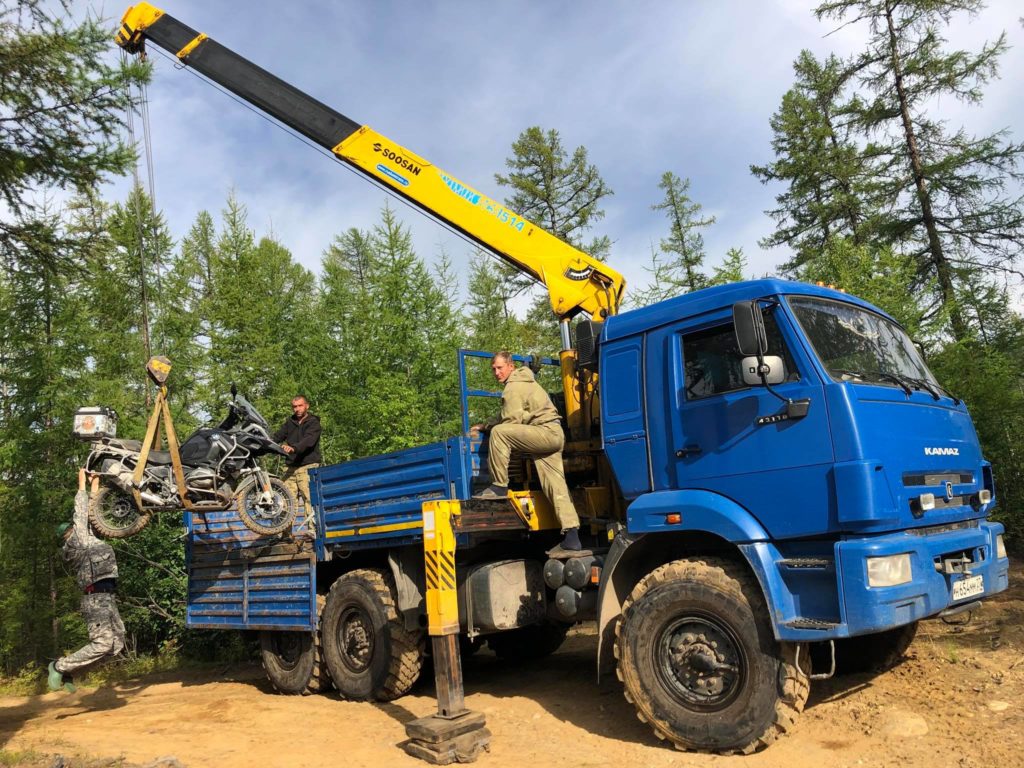
The thing is, I went the entire route from Hani to the bridge over the Olekma on my own. I crossed several large rivers over railway bridges and now can surely say that was quite an extreme experience. First you need to find an entrance to the track itself, then make sure that the train is not approaching.
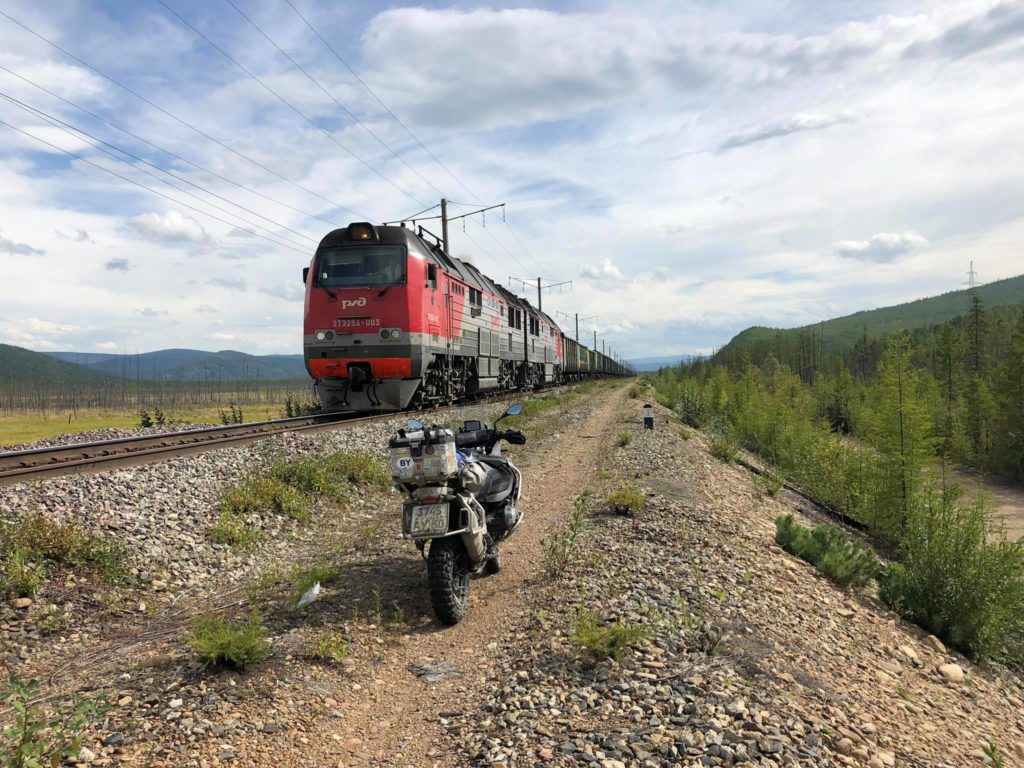

I checked it by putting my ear to the rails in some cases. :) Then I was slowly squeezing between the sleepers and supports, scraping the right handle against the railing and the engine protection against the sleepers on the left. That's how I overcame the bridges. Indeed, it was a very difficult day.
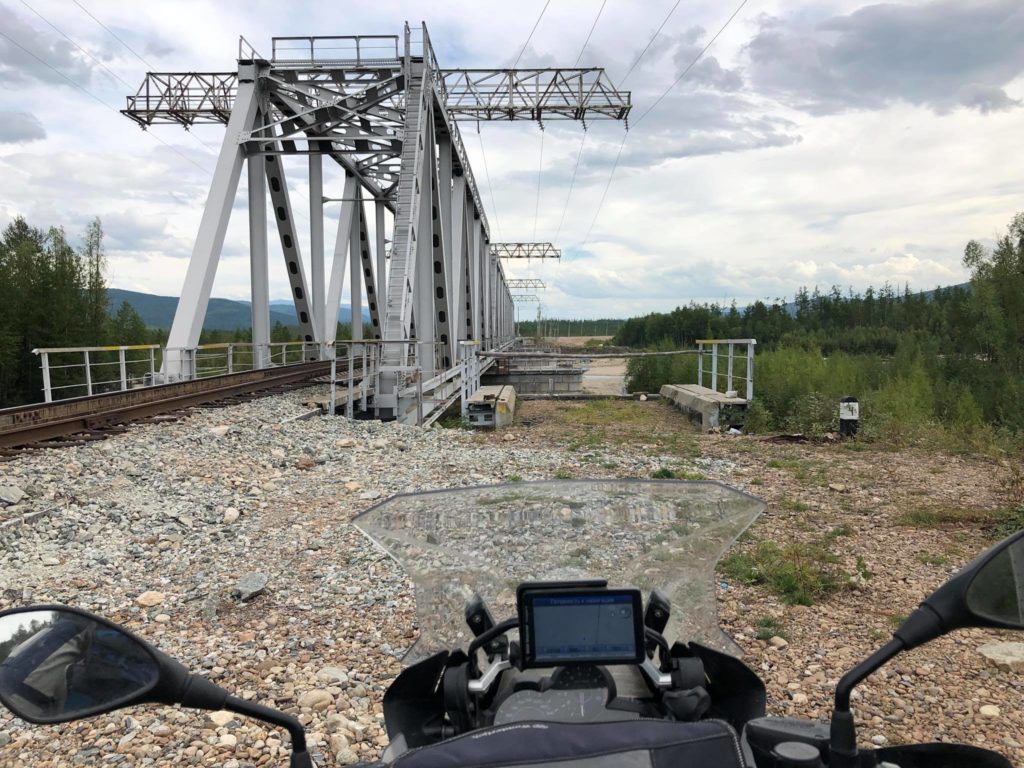
I rode only 140 km, but each of them was a serious challenge to me: I had to go along the berm close to the rails (while the trains were passing by), to overcome endless deep puddles and fords, to cross five railway bridges and after all I even rode into the swamp somehow. In the evening, being all wet and dirty, I reached the long bridge over the Olekma river, whis was impassable for any equipment. There I met my friends-jeepers. I washed my clothes and took a shower right in the river.
It started raining in the evening.The weather in this area is very important for those who are travelling. As a result of a couple of rainy days, the water in the rivers can rise so high that no means of transport would be able to pass through it.
The following morning we finally reached the opposite bank of the Olekma and immediately headed further. We made a stop in the village of the same name, replenished our food supplies and went ahead to Tynda, which was 375 km away. The first half of that journey was not better than the previous days: we went through fords, bridges, stones…
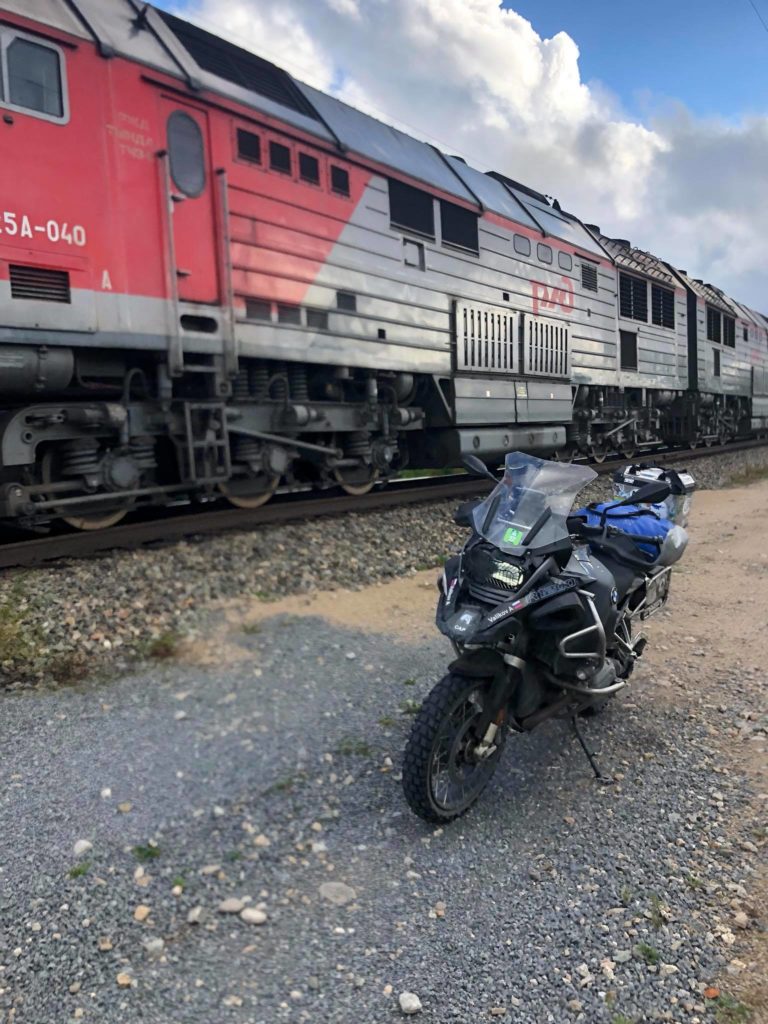
What's more, the puddles became bigger and deeper and I had to ride 50 kilometres along the gravel berm of the railway tracks.
I crossed about a dozen railway bridges. One of them was quite small but I barely managed to slip through, because a train was already approaching from behind. In the evening we stopped on the high bank of the Lopchv river with an awesome view!
Tynda.
That's the end of BAM. Or to be more precise, it's the end of our path along it about 1,700 km long. And the total length of the BAM is 3819 kilometres. After Tynda it goes further south-east to the Pacific coast and ends in the village called Sovetskaya Gavan.
It was the most difficult and longest road (if it can be considered a road) that I have ever travelled. It was not easy for me to pass all these countless rivers, fords and bridges by my heavy motorbike (which weighs up to 300 kg).But that was insanely interesting! Everything was worth it!
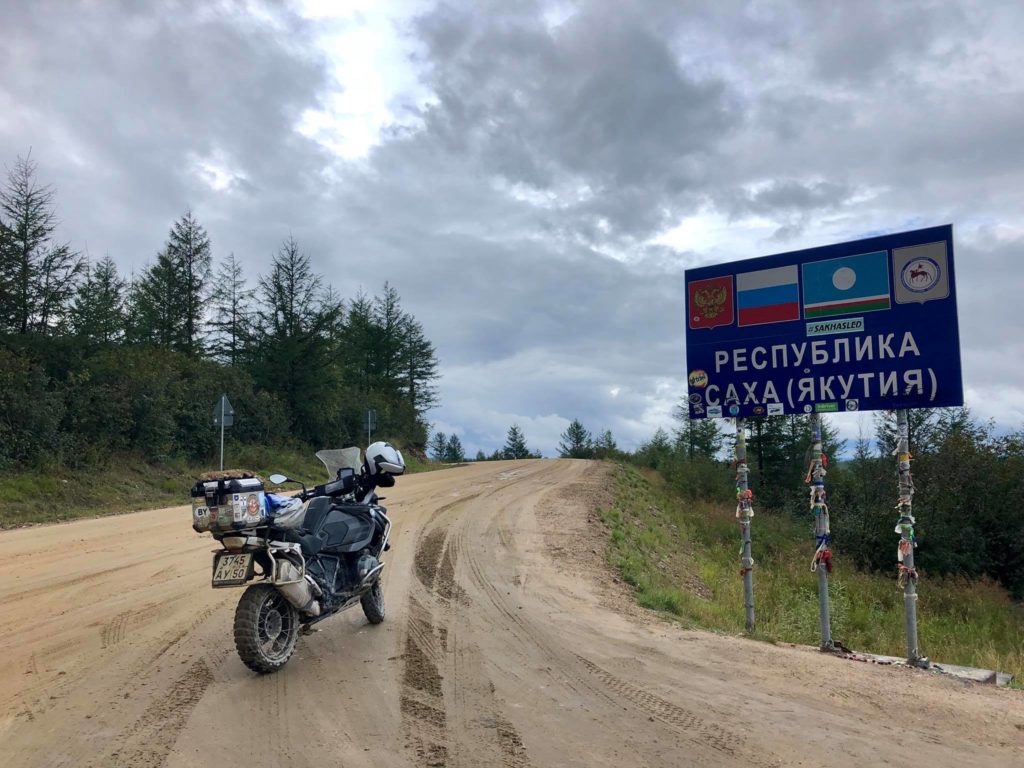
Tynda, the capital of the Baikal-Amur Mainline, seemed to us Las Vegas after all these Hani, Yuktali and other Handygs. There were asphalt roads, traffic lights, cafés, shops, hotels and good petrol stations!!! We stayed overnight in the same inn, where our friends had stayed before us. Finally, I could take a shower as a human being and wash the bunch of dirty clothes in the washing machine. We had lunch at a wonderful café named "Uzbechka". I filled a full tank with fuel number 95, bought some groceries and in the evening we got to … the wedding! We were placed opposite the newlyweds like honoured guests! :)
In the morning we visited the museum of BAM history. The museum was actually closed, but it was opened especially for us and another man from Australia. What's more, the guide took us on a great tour. The Australian turned out to be an interesting man too. He travelled by train from Vladivostok to St. Petersburg, making stops in various towns along the way and getting acquainted with Russia.
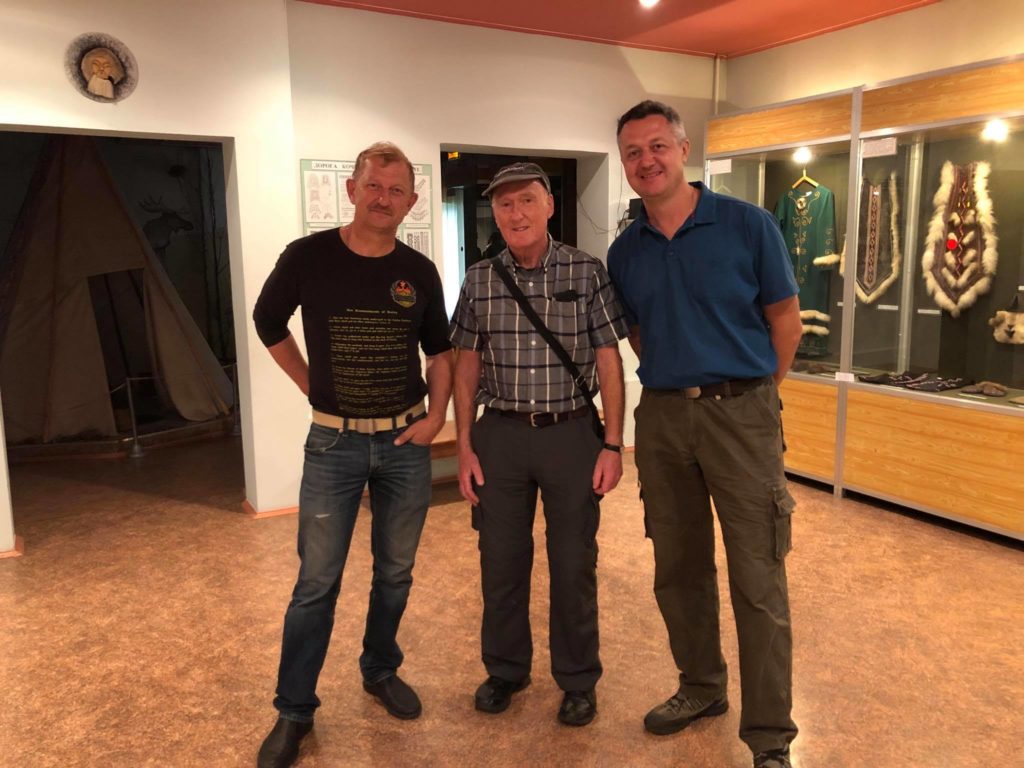
And we continue our journey. Now we're going to the north.
Neryungri.
Two hundred kilometers from Tynda there is a small town with an unpronounceable name Neryungri. Did you know anything about it? Honestly, I had no idea about it until I occasionally reached this town with a very specific name.
We left Tynda after lunch but heavy rain and a broken grader, interspersed with sections of asphalt road, did not allow us to go far. We hid from the downpour at the petrol station and decided to stay overnight in the nearest town, which appeared to be Neryungri.
Having spent the night in a rented two-room apartment on the fourth floor of a panel five-storey building, we were about to go further, but suddenly the telephone rang. A stranger called us, introduced himself as Denis and asked us not to leave for at least the next 15…20 minutes. I asked him how he had known our phone number. He answered that the night before he had seen our car with a geocamper and the inscription "Heading for Magadan!". After that he called the Arctic Trucks company and asked the management for our phone number.
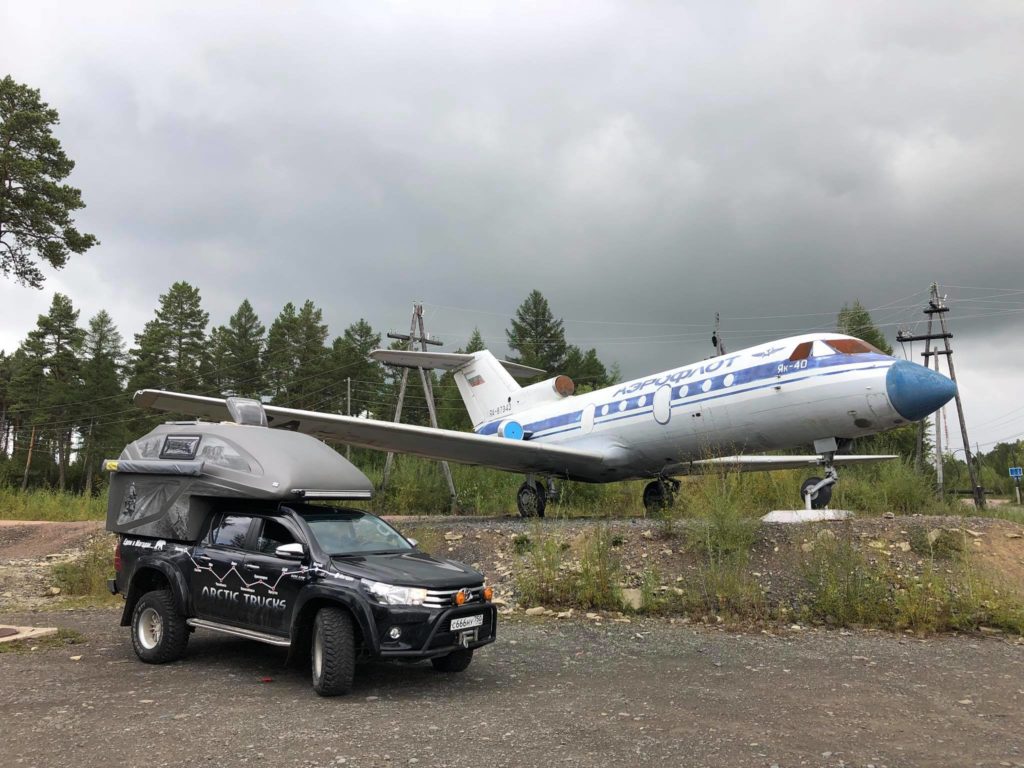
Denis appeared to be an amazingly creative person. He already had a plan for our stay in Neryungri and it took him 15 minutes to persuade us of the need to implement it.
And the plan turned out to be great! We saw a coal mine, a huge BelAZ, hot springs of the taiga and visited a private museum, in which the owner of this unique collection of artifacts (he's also a deputy of Yakutia, btw) Alexander Koshukov guided a two-hour excursion for us.
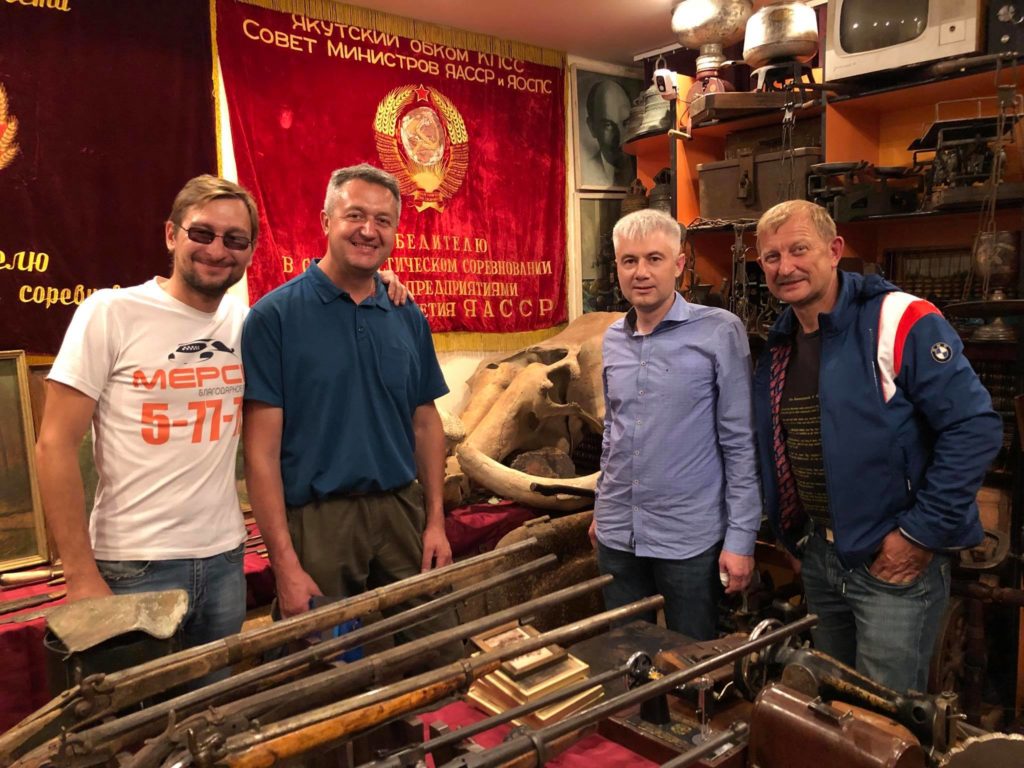
I had a feeling that he had got almost everything in his collection: a mammoth skull, weapons and household items of the Scythians, some treasures from the time of Ivan the Terrible's reign and weapons from the time of the First World War…
And our day ended with a wonderful banquet with barbecue and moonshine in one of the garage boxes. We were in the company of extreme travellers and just fantastic people!
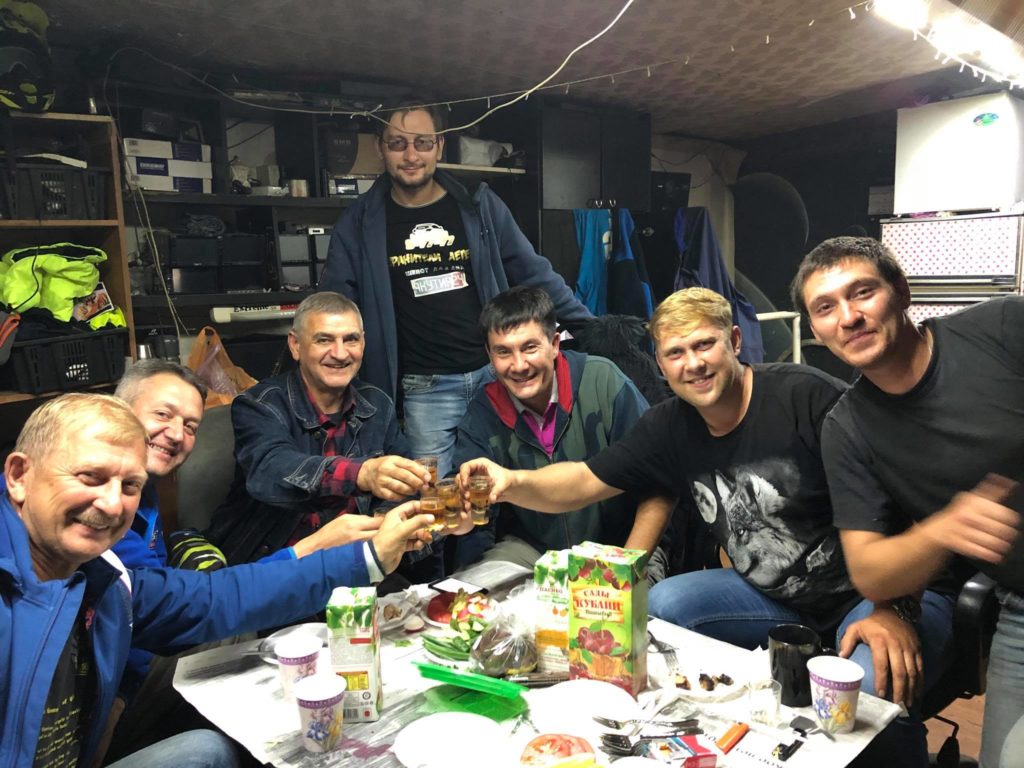
Neryungri is the greatest town in the world! :)
The federal highway "Lena".
Some drops of cold water slowly trickled down my back between the shoulder blades.The downpour became stronger and turned into hail. Strong lateral gusts of wind seemed to be about to throw my motorbike off the road. Nothing was visible at a distance of 10 m. There was just a solid wall of downpour around. An excellent expensive BMW Enduro Guard suit could not withstand this waterfall and leaked almost through. "If the asphalt ends now, I will have lots of fun!", I thought. Five minutes later the asphalt road suddenly turned into the grader one and my motorbike floated along it, splashing brown slush.
The Lena highway from Tynda to Yakutsk is diverse. Good asphalt roads can suddenly be changed by a broken gravel surface with a thin layer of clay.
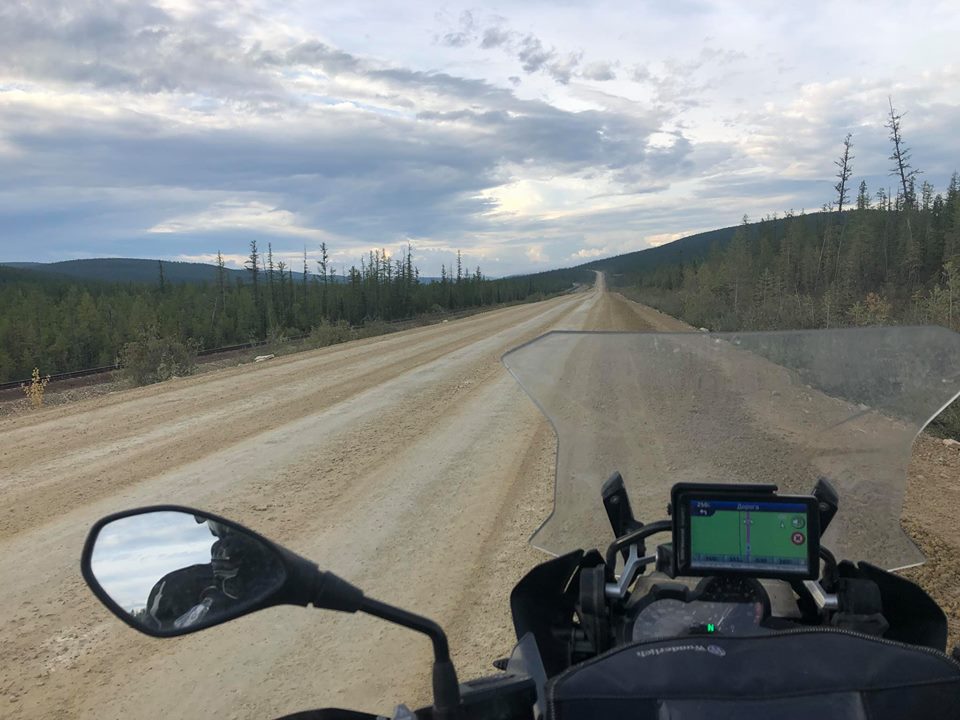
Having driven another 30 km, I realized that I had to look for a parking place somewhere, because continuing the way while being soaked to the bones at an average temperature +10°C would be a bad idea. Fortunately, soon I saw a village with a roadside cafe on the way. There I waited for Oleg and we also stayed overnight in it.
The following morning greeted us with sunny weather. My navigator showed that there were 280 km to Yakutsk left. I put on a wet helmet and gloves (they will probably become dry on my way) and wet motorbike boots (they are unlikely to become dry). After that my motorbikey flew along the grader road, raising brown dust behind it.
About an hour later I saw a small tent and a man next to it with my peripheral vision on the right.
I slowed down, turned around and rode up to him. And it wasn't in vain!
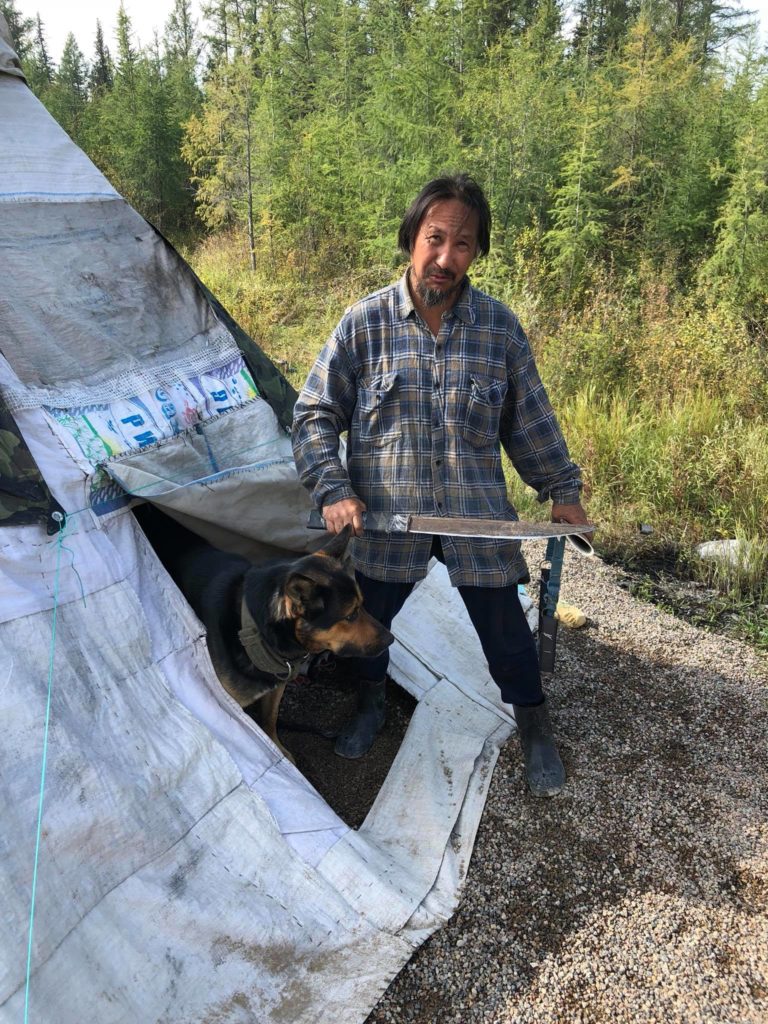
Video
Часть 2.1 - Байкало-Амурская Магистраль
Часть 2.2 - Байкало-Амурская Магистраль
 Cap-travel.ru
Cap-travel.ru